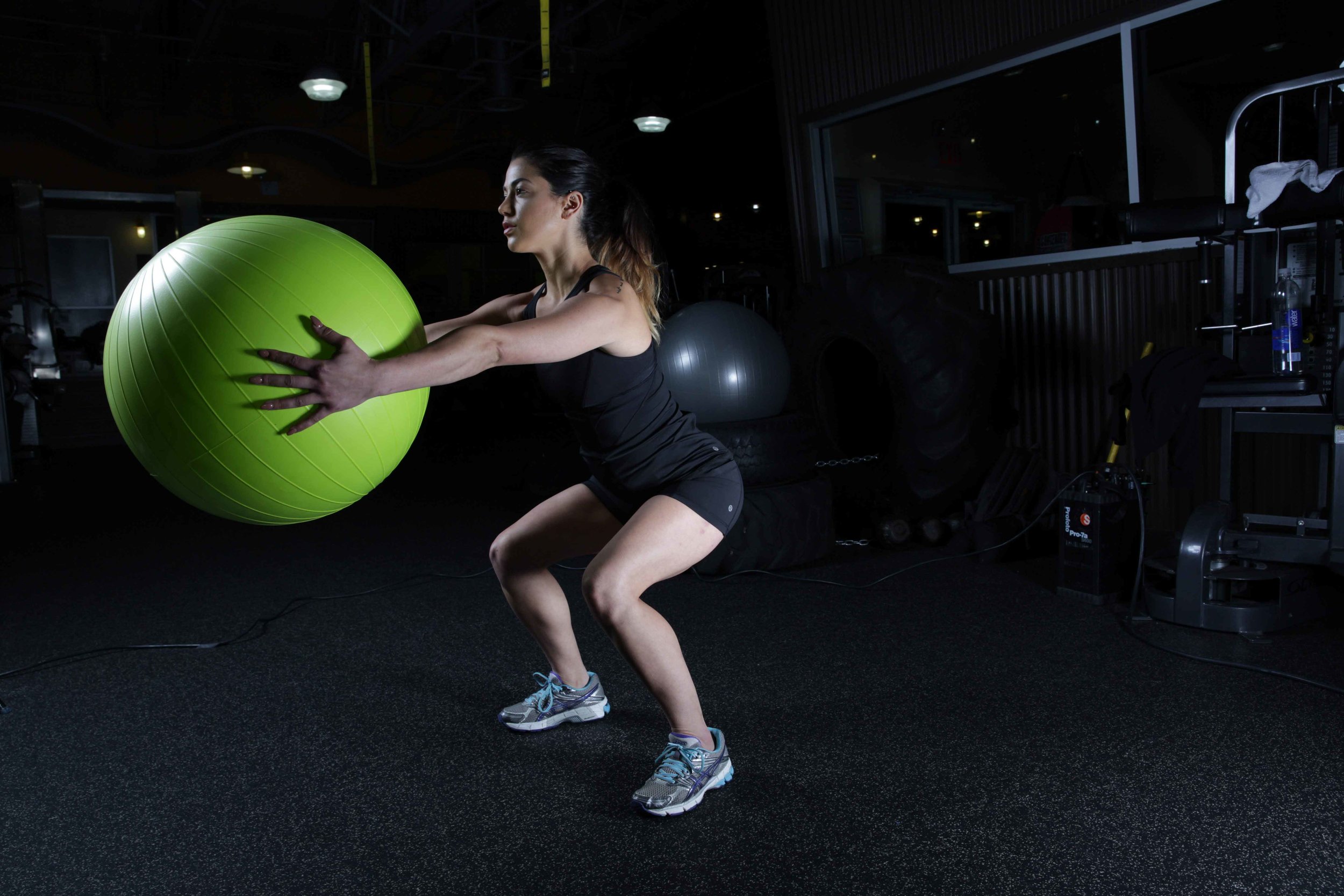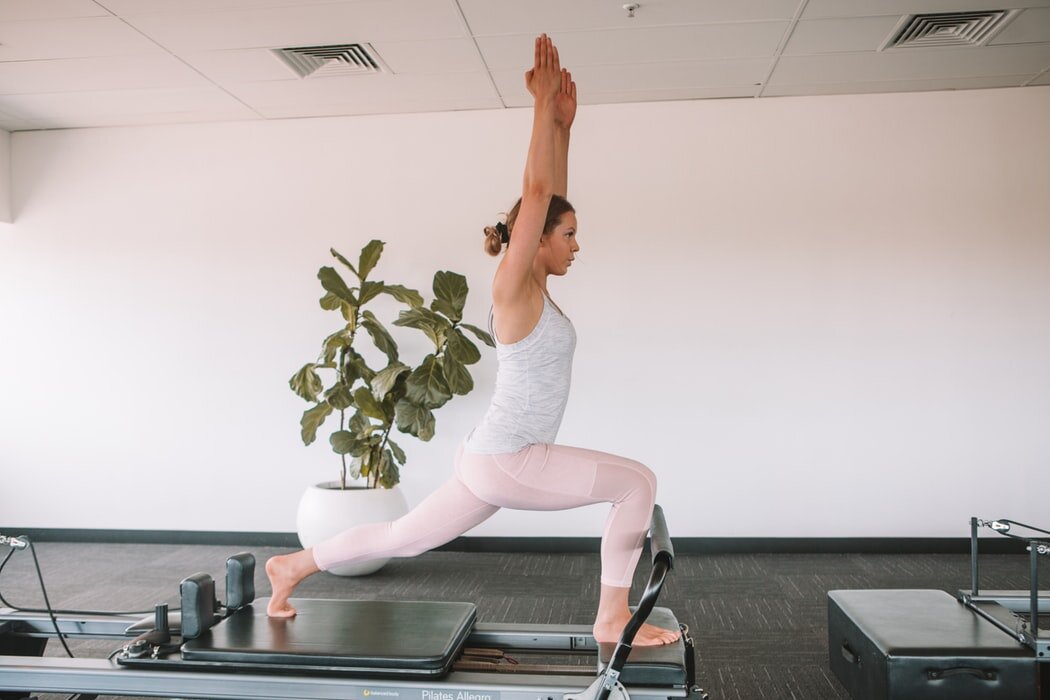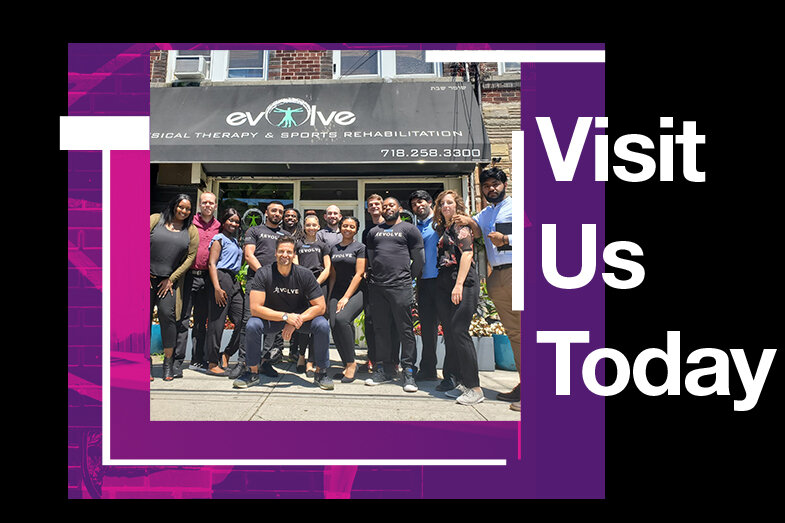
Brooklyn Physical Therapy News- Evolve NY
PT and Fibromyalgia
Fibromyalgia is a disorder of the musculoskeletal system that causes chronic pain in many different parts of the body. It is often accompanied by fatigue, sleep problems, memory lapses and mood issues. Doctors and researchers believe that fibromyalgia alters how the brain processes pain. They believe that pain experienced by those affected becomes amplified and feels worse than it actually is.
Are You Suffering From Fibromyalgia?
Each day while we are performing our daily activities, our muscles and tendons are working hard to support our bodies. When our muscles and tendons become overworked, pain, stiffness and weakness can result. Sometimes this can progress into more serious, chronic conditions such as Fibromyalgia.
What is Fibromyalgia?
Fibromyalgia is a disorder of the musculoskeletal system that causes chronic pain in many different parts of the body. It is often accompanied by fatigue, sleep problems, memory lapses and mood issues. Doctors and researchers believe that fibromyalgia alters how the brain processes pain. They believe that pain experienced by those affected becomes amplified and feels worse than it actually is.
What Causes Fibromyalgia?
There is no known single cause for this condition. It may result from physical trauma, surgery, infection or an accumulation of micro injuries. Most of the time it is idiopathic, which means the cause is not known. Scientists have narrowed down potential fibromyalgia risk factors which include:
Gender: in general, fibromyalgia affects more women than men.
Genetic:. The disorder tends to run in families. If you have a relative with this condition, you might be at risk of having it as well.
Infection and other disorders: Fibromyalgia can result from physical stress such as an infection. Pre-existing conditions can also put you at risk, such as osteoarthritis, lupus or irritable bowel syndrome (IBS).
How Does It Affect People?
Fibromyalgia can be easily dismissed as simple musculoskeletal pain without taking into consideration its other symptoms (sleep disturbances, mood disorders, memory issues). It is difficult to diagnose and often overlooked. Fibromyalgia can interfere with your ability to participate in daily tasks and work. As a result, it can lead to other conditions such as depression, anxiety and even more pain.
Can Physical Therapy Help?
Patients with fibromyalgia experience pain in various parts of the body, which causes the muscles of the body to tense up and stiffen. A physical therapist can make use of physical agents, like hot or cold compresses to reduce pain and stiffness. Frequently, joint range of motion and muscular strength are also affected. A technique called manual therapy can be utilized to treat these. Your PT will also teach you flexibility and strengthening exercises. These exercises will help prevent the pain from returning.
Aside from stretching and strengthening, exercises that promote relaxation are also taught. These include diaphragmatic breathing and meditation. These are important to practice at home as they will be your best armor against the pain caused by Fibromyalgia.
What You Can Do at Home
While participating in a physical therapy program, you will usually be given a set of exercises you can safely do at home in between appointments. Here are some tips to get you started:
Warm Up Exercises- These are easy and simple actions you can do at home without supervision. Do a couple of rotations, flexion and extension movements using your big joints – the neck, shoulder, hip, knee and ankle. You should perform these for 5 to 10 minutes.
Stretch Your Big Muscles- Your big muscles are your shoulders, back, hips, thighs and calves. These muscles are responsible for maintaining good posture, and since we use them so frequently they tire easily. Don’t forget to ask your physical therapist the proper way to stretch them!
Aerobic Exercise- We all have a tight schedule, but even a brisk walk for twenty minutes, five days a week can make a big impact. There are many opportunities for exercise, you just have to find the right one for you! Committing to an aerobic activity that you like will help keep fibromyalgia away.
If you are already in pain, don’t wait until it goes away. Chances are, it won’t. Or if it does, it will likely return. Physical therapy can help you prevent it from returning. If it does return, physical therapy can still help you by teaching you how to cope with the pain. Click here to find out more about physical therapy for Fibromyalgia
About Evolve Physical Therapy
NYC's Premier Holistic Physical Therapy Clinics
There’s physical therapy, there’s training, and then there’s EVOLVE. We use the science of biomechanics merged with fitness to help our patients get better and stay better!
First we evaluate, then we heal, then we strengthen our clients so they can reach their goals, feel better, and live happier lives. We do so by utilizing a range of core techniques and specialized treatments to reduce pain, improve mobility, enhance physical strength and deal with the underlying issues, not just the pain itself.
Multiple Locations!
What is Pelvic Floor Physical Therapy?
What is pelvic floor therapy? Included among the many services a physical therapist offers is Pelvic Floor Dysfunction Therapy. In this article, we’ll give you the background on how dysfunction in your pelvic floor muscles can affect your quality of life, and what physical therapy can do to help fix the problem.
IMPROVE YOUR PELVIC FLOOR FUNCTION
Included among the many services a physical therapist offers is Pelvic Floor Dysfunction Therapy. In this article, we’ll give you the background on how dysfunction in your pelvic floor muscles can affect your quality of life, and what Physical Therapy can do to help fix the problem.
What Is The Pelvic Floor? And Why Is It Important?
Your pelvis is made up of two bones that make room for your internal organs. While connected to the spine and hip, the pelvic bones fuse together to make a bowl shape. To help make this “room” orderly and to make sure that the organs are stable in their positions, muscles and ligaments attach around them. Think of your pelvic floor muscles and ligaments as a trampoline or a sling, where your organs - the bladder, rectum, uterus for women, and prostate for men - lie down. Aside from providing stability, your pelvic floor muscles help you to control urinating, bowel movements and sexual activity. So, what happens when they are affected?
Our pelvic floor muscles wrap around our internal organs, so when our muscles are active/contracted, we are able to hold and control urinating or defecating. When muscles are weak, it may result in urinary incontinence, which is a sudden leak of urine outside of your voluntary control. Pelvic floor muscles can also overreact or have a spasm that makes it difficult for a person to fully empty their bladder and bowel. And, just like any other muscle, the muscles of your pelvic floor can be tight and may result in painful intercourse for women.
Other symptoms of pelvic floor dysfunction are:
You need to take several trips to the bathroom either to urinate or defecate in a short time span.
You stop urinating even though you feel as though you have not completely emptied your bladder
Pain in your lower back that is not musculoskeletal or orthopedic in origin
Painful urination
Ongoing pain in your pelvic area, groin, genitals or rectum with or without bowel movement
What Causes These Symptoms?
There is not one specific cause of pelvic floor dysfunction. Pelvic floor muscles are just like any other muscle in the body, they can get stiff, tighten up, develop knots or become weak. Some known causes of this condition are pregnancy, vaginal childbirth, or trauma. Some doctors would also suggest that frequent coughing or straining develops a certain level of incoordination in the pelvic muscles.
When to Seek Help?
It’s always best to seek medical assistance when you first realize the symptoms. Never wait for pain, or any other kind of symptom to go away on its own because even if it does, chances are it will return! And in some instances, symptoms that return are worse. Most clients feel ashamed and bothered when they experience incontinence or leakage. And many clients feel inconvenienced when they can't use the bathroom properly.
What Can PT do?
Yes, a Physical Therapist can help! After you consult with a medical doctor to rule out other diagnosis (like kidney problems), your therapist can perform an assessment and develop a treatment plan to address your symptoms. Here is what you can expect:
Biofeedback - this technique involves placing special electrodes or sensors to muscles close to your pelvic area. This will help give you feedback to see if you’re relaxing or tightening the right muscles. For example, when we try to stop urinating, we usually use our pelvic muscles to hold it in, but if they’re weak, some people hold their urine by using also the abdominal and postural muscles. Biofeedback can help ensure that you’re using the pelvic muscles, and not the abdominals. The feedback can be in the form of sound (high pitched when contracting and low when relaxing) or a video where you see a bunch of lines going up and down (up when you’re contracting and low when relaxing)
Relaxation Techniques - your therapist will teach you ways to relax. One is through diaphragmatic breathing exercises. When we breathe to relax and meditate, we should be able to breathe deeply and expand our bellies. In some cases when a patient is comfortable enough, massage or soft tissue mobilization is provided.
Sessions can get awkward, but it’s up to your physical therapist to make you feel comfortable in your exercises, so it’s important to find the right therapist for you.
The Most Common Exercise Is…
The Kegels! You might have already heard it, and you might have already tried it! Kegels is pretending that you need to urinate and then trying to hold it in. It is an alternating exercise between relaxing and contracting your pelvic floor muscles. It’s important to be familiar with the sensation of contracting and relaxing your muscles, and we’re sure your PT can help you achieve this.
You can also practice this at home, here are the steps to take:
It is best to start practicing Kegels when lying flat on a firm surface or floor. Bend both your knees with your feet still on the ground.
Tighten or contract your muscles for 2 to 3 seconds then relax and release them for the next 5 seconds.
Repeat this exercise 10 times while lying down. And then, do the exercise three times a day (morning, afternoon and night)
When you are more comfortable with the exercise, practice doing it in other positions like sitting and standing. You can also practice while doing an activity such as when washing dishes or watching TV!
Click here to find out more about physical therapy for pelvic floor dysfunction
About Evolve Physical Therapy in Brooklyn-
Got Pain? Schedule a Consultation Today! Walk Ins Welcome.
NYC's Premier Holistic Physical Therapy Clinics-
There’s physical therapy, there’s training, and then there’s EVOLVE. We use the science of biomechanics merged with fitness to help our patients get better and stay better!
First we evaluate, then we heal, then we strengthen our clients so they can reach their goals, feel better, and live happier lives. We do so by utilizing a range of core techniques and specialized treatments to reduce pain, improve mobility, enhance physical strength and deal with the underlying issues, not just the pain itself.
Multiple Locations!
Preventing Back Injuries and Back Pain With Back Exercises
Have you ever experienced lower back pain? What do you do when you have it? Did you know that, contrary to popular belief, you should be doing movement exercises rather than just resting when you have back pain?
Simple Back Exercises to Get You Through the Day!
Have you ever experienced lower back pain? What do you do when you have it? Did you know that, contrary to popular belief, you should be doing movement exercises rather than just resting when you have back pain?
When we experience back pain, it is usually because of a mix of factors: tight muscles around your lower back, a poor postural alignment, and a weakness in core musculature. Here, we provided some exercises that can help you chase away your back pain:
Find Your Neutral Spine
Your spine is in “neutral” when all its segments are in good alignment. This is the most stable and strongest position of your spine, it’s important to practice being in this position to prevent pain and injuries. To find your “neutral” spine, relax and lie on your back on a firm surface. Gently tilt your pelvis forward by pushing your lower back down and flat on the surface, then tilt it all the way backwards by making an arch with your lower back. After doing the pelvic tilt, find your “neutral” by feeling the best and most comfortable position for you in between the tilts.
Focus on Breathing
There is research linking breathing to good postural alignment and lower back pain. The correct way to breathe is called diaphragmatic breathing. Take a deep breath through your nose making sure that your belly expands and not your chest. You can do this while sitting, standing, or lying on your back.
Open up Your Hips. Stretch, Stretch and Stretch
A lot of stretching is involved when dealing with back pain. Our muscles tighten up as a way of protecting themselves when they (or we) feel pain. There are three stretches you can do to help with your lower back pain:
Knee to Chest - Hug both of your knees to your chest while lying on your back on a flat surface. You should be able to feel a gentle stretch on your lower back and butt muscles. Hold this position for 10 to 15 seconds while inhaling through your nose and exhaling through your mouth.
Rotational Stretch - Lie back on the floor with your knees bent with feet flat on the floor. Make sure your shoulders are flat on the floor while you gently roll both your knees to one side of your body. Again, hold this position for 10 to 15 seconds, don’t forget about diaphragmatic breathing!
Runner’s Stretch - this position helps open up your hips and pelvis, it stretches both the front and back muscles of your legs. Step one foot forward and gently bend your knees into a low lunge until you feel a slight stretch on your back leg. It’s kind of tricky to hold your balance in this position, so you can opt to brace yourself on a table or wall. Hold it for 10 to 15 seconds.
Partial Crunches
You don’t have to do a whole sit up to strengthen your core! Partial crunches are better and friendlier for your back. Start by lying on the floor with your knees bent and feet flat. Breathe in deeply, and then as you breathe out, engage your abdominal muscles and slowly raise your head and shoulders to about 2 inches off the ground. Make sure your neck is aligned with your spine to avoid strain. If you’re just starting out, you can put your hands forward as if you’re trying to reach for your knees. As you get stronger, you can then put your hands across your chest, or behind your head. This exercise will help strengthen your core. Your core muscles have a big role in preventing lower back pain. Even though they are located in the front (in your abdomen), they help your back muscles in maintaining your upright posture.
Bridging
This exercise helps you strengthen your gluteus (butt) muscles. Lie on your back on a firm surface with your knees bent and feet flat. Take a deep breath, slowly exhale, then lift your buttocks off the floor while engaging your abdominal muscles. Make sure your shoulders stay on the floor. Then slowly lower your buttocks back to the floor and rest for a few seconds. Repeat this movement 15 times.
Supermans
This exercise will challenge the whole length of your back. Your position should literally look like Superman himself! Lie face down on the floor with your arms extended in front of the body, and your legs should also be stretched out straight. Now, try to lift both your arms and legs up off the ground. You should aim for about 6 inches gap between your legs and the ground. Keep your head up and look straight forward as you hold this position for 6 seconds.
All of these exercises are safe to do at home, but still, it’s best to see a Physical Therapist first to help you with your back pain. They will provide you with tools that can decrease or completely eliminate the pain, and teach you exercises to keep the pain from returning.
Click here to find out more information about physical therapy for back pain
About Evolve Physical Therapy in Brooklyn
Brooklyn's Premier Holistic Physical Therapy Clinics
There’s physical therapy, there’s training, and then there’s EVOLVE. We use the science of bio-mechanics merged with fitness to help our patients get better and stay better!
First we evaluate, then we heal, then we strengthen our clients so they can reach their goals, feel better, and live happier lives. We do so by utilizing a range of core techniques and specialized treatments to reduce pain, improve mobility, enhance physical strength and deal with the underlying issues, not just the pain itself.
Multiple Locations!
1-718-258-3300


















